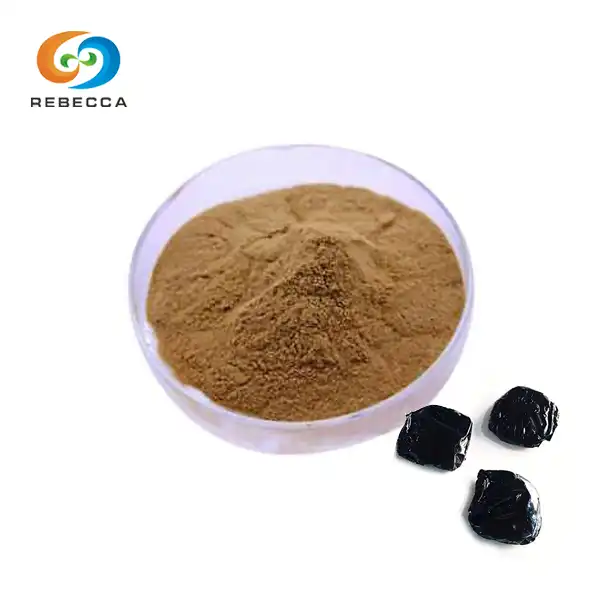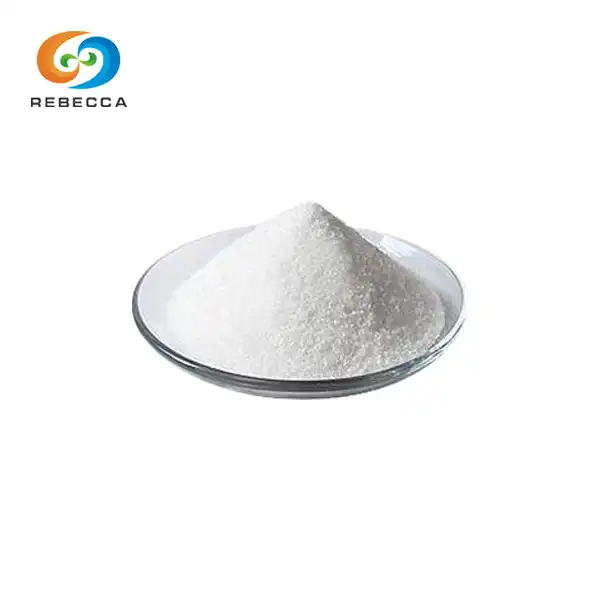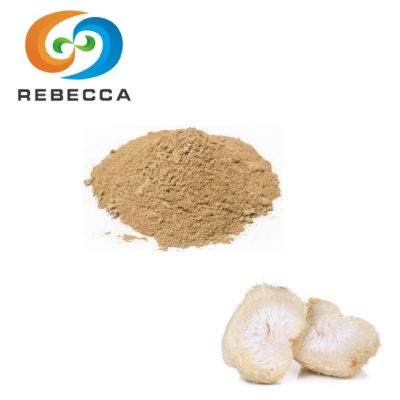Is alpha ketoglutarate glucogenic?
Alpha-ketoglutarate (AKG) is indeed glucogenic, playing a crucial role in the body's glucose production process. This vital metabolic intermediate serves as a precursor for glucose synthesis, particularly during periods of fasting or increased energy demand. AKG's glucogenic properties stem from its ability to enter the gluconeogenesis pathway, where it can be converted into glucose through a series of enzymatic reactions. Understanding AKG's glucogenic nature is essential for grasping its significance in cellular energy metabolism and overall physiological function.
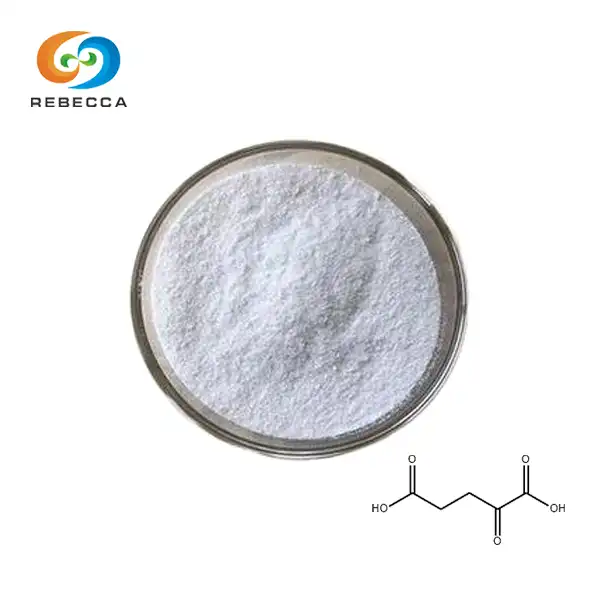
【English name】: Alpha-Ketoglutarate
【CAS No.】: 328-50-7
【Molecular Formula】: C5H6O5
【Active ingredients】: Alpha-Ketoglutarate
【Specification】: Alpha-Ketoglutarate 98%
【Appearance】: White powder
Yes — α-Ketoglutarate Is Glucogenic
α-Ketoglutarate's Role in Gluconeogenesis
Alpha-ketoglutarate stands out as a key player in the complex process of gluconeogenesis. This metabolic pathway allows the body to produce glucose from non-carbohydrate sources, ensuring a steady supply of this vital energy molecule. AKG's involvement in gluconeogenesis is particularly noteworthy due to its position as an intermediate in the tricarboxylic acid (TCA) cycle, also known as the Krebs cycle.
When the body requires glucose, AKG can be diverted from the TCA cycle and channeled into the gluconeogenic pathway. This versatility makes AKG an essential component in maintaining glucose homeostasis, especially during periods of fasting or intense physical activity. The conversion of AKG to glucose involves several enzymatic steps, each carefully regulated to meet the body's energy needs.
α-Ketoglutarate Contributes to Glucose Production
The contribution of alpha-ketoglutarate to glucose production is multifaceted. Initially, AKG undergoes a series of transformations within the mitochondria. It's converted to oxaloacetate, which can then be transported to the cytosol. In the cytosol, oxaloacetate is converted to phosphoenolpyruvate (PEP), a critical intermediate in the gluconeogenic pathway.
From PEP, the pathway continues through several more steps, ultimately resulting in the formation of glucose. This process requires energy in the form of ATP and reducing equivalents like NADH, highlighting the intricate balance between energy consumption and production in cellular metabolism.
The Metabolic Pathway: α-Ketoglutarate to Glucose
The metabolic journey from alpha-ketoglutarate to glucose is a testament to the body's remarkable biochemical capabilities. This pathway involves multiple enzymes and cofactors, each playing a specific role in the transformation process. Key steps include the conversion of AKG to succinyl-CoA, then to succinate, fumarate, and malate, before reaching oxaloacetate.
Once oxaloacetate is formed, it can be used to produce phosphoenolpyruvate, which then undergoes a reverse glycolysis process to form glucose. This intricate pathway underscores the importance of AKG not just as a glucogenic substrate, but as a central molecule in cellular energy metabolism. Understanding this pathway is crucial for researchers and health professionals studying metabolic disorders and developing nutritional strategies.
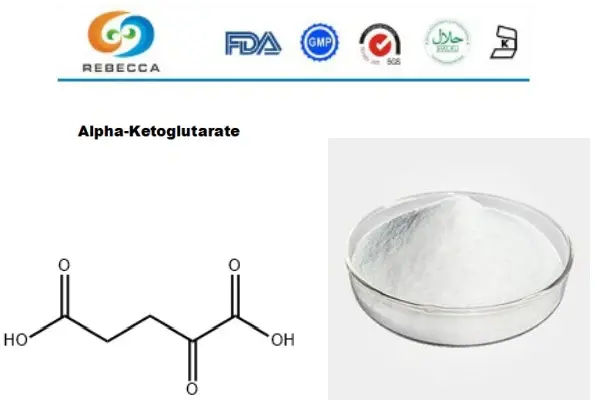
Amino acids that degrade to α-ketoglutarate (e.g., glutamate, proline, histidine) are also classified as glucogenic
Glutamate: A Key Precursor to α-Ketoglutarate
Glutamate stands out as a primary amino acid precursor to alpha-ketoglutarate, playing a pivotal role in the glucogenic process. This amino acid is abundantly present in the human body and dietary sources, making it a significant contributor to AKG production. The conversion of glutamate to AKG occurs through a deamination reaction catalyzed by glutamate dehydrogenase, a key enzyme in amino acid metabolism.
This transformation not only provides a source of AKG for potential glucose production but also links amino acid metabolism with carbohydrate metabolism. The interplay between glutamate and AKG exemplifies the interconnectedness of metabolic pathways and the body's ability to adapt to varying nutritional states.
Proline's Conversion to α-Ketoglutarate and Glucose
Proline, another glucogenic amino acid, follows a unique pathway to contribute to glucose production via alpha-ketoglutarate. The conversion of proline to AKG involves multiple steps and enzymes, including proline oxidase and pyrroline-5-carboxylate dehydrogenase. This process not only provides a source of AKG but also generates reducing equivalents that can be used in other metabolic processes.
The ability of proline to serve as a glucogenic precursor highlights the body's capacity to utilize diverse resources for energy production. This metabolic flexibility is particularly important during periods of prolonged fasting or in conditions where glucose availability is limited.
Histidine Metabolism: From Amino Acid to Glucose
Histidine, an essential amino acid, also contributes to glucose production through its degradation to alpha-ketoglutarate. The pathway from histidine to AKG involves several intermediates, including urocanate and imidazolone propionate. This multi-step process underscores the complexity of amino acid metabolism and its integration with glucose homeostasis.
The conversion of histidine to AKG and subsequently to glucose demonstrates the body's efficiency in utilizing various nutrient sources. This metabolic versatility is crucial for maintaining blood glucose levels and supporting cellular energy needs under different physiological conditions.
Glucose Production During Fasting Or Energy-Demanding States
α-Ketoglutarate's Role in Fasting Glucose Maintenance
During fasting, alpha-ketoglutarate emerges as a critical player in maintaining blood glucose levels. As glycogen stores deplete, the body increasingly relies on gluconeogenesis to meet its glucose needs. AKG, derived from protein breakdown and other sources, becomes an important substrate for this process. Its conversion to glucose helps prevent hypoglycemia and ensures a steady supply of energy to glucose-dependent tissues, particularly the brain.
The utilization of AKG during fasting exemplifies the body's adaptive metabolic responses. This process is tightly regulated by hormones such as glucagon and cortisol, which promote gluconeogenesis and the use of alternative energy sources like ketone bodies.
Energy Demands: When α-Ketoglutarate Becomes Crucial
In energy-demanding states, such as intense physical exercise or stress, alpha-ketoglutarate's role in glucose production becomes even more pronounced. These conditions often require rapid mobilization of energy resources, and AKG's ability to contribute to glucose synthesis helps meet this increased demand. The conversion of AKG to glucose during high-energy states involves complex interactions between various metabolic pathways and regulatory mechanisms.
Understanding AKG's role in these scenarios is valuable for athletes, fitness enthusiasts, and individuals managing conditions that affect energy metabolism. It underscores the importance of proper nutrition and metabolic health in supporting the body's energy needs during challenging physiological states.
Metabolic Adaptations: α-Ketoglutarate in Glucose Homeostasis
The involvement of alpha-ketoglutarate in glucose homeostasis reflects the body's remarkable ability to adapt to changing metabolic conditions. This adaptation involves not only the direct conversion of AKG to glucose but also its influence on other metabolic processes. For instance, AKG can affect the activity of enzymes involved in glucose metabolism and influence the expression of genes related to energy production.
These metabolic adaptations highlight the intricate balance maintained by the body to ensure adequate glucose supply. They also point to potential areas of research for metabolic disorders and the development of strategies to enhance metabolic flexibility and overall health.
Alpha-ketoglutarate's glucogenic nature plays a vital role in maintaining glucose homeostasis and supporting energy metabolism. Its ability to contribute to glucose production, especially during fasting or high-energy demand states, underscores its importance in cellular function. The intricate pathways involving AKG and glucogenic amino acids demonstrate the body's remarkable metabolic flexibility. Understanding these processes is crucial for advancing our knowledge of metabolism and developing strategies for optimal health and performance.


Wholesale Alpha Ketoglutarate Supplier
Shaanxi Rebeccia, a leading supplier of high-quality alpha-ketoglutarate, operates with state-of-the-art extraction, separation, and purification equipment. Our facility adheres strictly to GMP and ISO standards, ensuring product safety and efficacy. We maintain rigorous quality control throughout our production process, from raw material sourcing to final product delivery. For premium products, contact us at information@sxrebecca.com. Our alpha ketoglutarate specification is 99%.
References
- Owen OE, Kalhan SC, Hanson RW. The key role of anaplerosis and cataplerosis for citric acid cycle function. J Biol Chem. 2002;
- Wahlstrom A, Sayin SI, Marschall HU, Backhed F. Intestinal Crosstalk between Bile Acids and Microbiota and Its Impact on Host Metabolism. Cell Metab. 2016;
- Hou Y, Wu G. Nutritionally nonessential amino acids: a misnomer in nutritional sciences. Adv Nutr. 2017;
- Rui L. Energy Metabolism in the Liver. Compr Physiol. 2014;
- Holeček M. Branched-chain amino acids in health and disease: metabolism, alterations in blood plasma, and as supplements. Nutr Metab (Lond). 2018;
- Wu G. Amino acids: metabolism, functions, and nutrition. Amino Acids. 2009;




